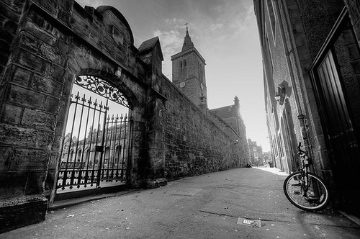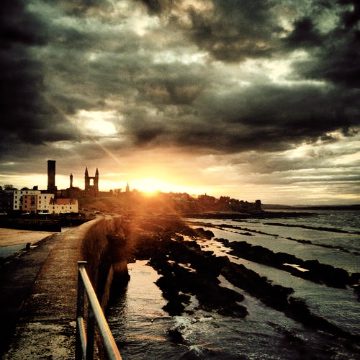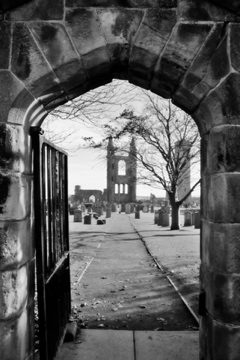What to see in St Andrews Scoltand
Click here for a free guided tour PDF
Know exactly what to see, do and discover in St Andrews
The first inhabitants who settled on the estuary fringes of the river Tay and Eden during middle stone age came from the plains in Northern Europe between 10,000 to 5,000 BC. This was followed by the nomadic people who settled around the modern town around 4,500 BC as farmers cleaning the area of woodland and building monuments
The parishes lie on the south bank of the River Eden and are bounded by Leuchars, Kingsbarns, Dunino, Cameron, Ceres and Kemback.
“FIFE, a maritime county of the east side of Scotland, lying nearly in the middle of the lowland region, which is bounded by the Lammermoors on the south, and the Grampians on the north. It is a peninsula, enclosed by the Firth Of Tay on the north, the North Sea in the east, and the Firth of Forth on the south; and it marches on the west with Perthshire, Kinross-shire, and Clackmannanshire …The southern coast is, for the most part, indented by small rocky bays with corresponding projecting headlands; but along the banks of the Tay, the grounds slope gently toward the beach, and are generally cultivated to the river’s edge. Along the north-eastern shore, towards St Andrews, it presents one large plain, terminating in a flat beach of sand.”


the Pier Walk is one of the oldest traditions in St Andrews. Every Sunday, after chapel service, students in their gowns walk down to the end of the pier, climb up the ladder and walk back along the top.

St Andrew’s cathedral was founded to supply more accommodation than the older church of St. Regulus (St. Rule) afforded. This older church, located on what became the cathedral grounds, had been built in the Romanesque style. Today, there remains the square tower, 33 metres (108 feet) high, and the quire, of very diminutive proportions. On a plan of the town from about 1530, a chancel appears, and seals affixed to the city and college charters bear representations of other buildings attached. To the east is an even older religious site, the Church of St Mary on the Rock, the Culdee house that became a Collegiate Church.
Museum of the University of St Andrews
The Museum of the University of St Andrews (MUSA) displays to the public some of the treasures from the University’s collection of over 112,000 artefacts.
The museum has four galleries, a ‘Learning Loft’ and a viewing terrace with panoramic views over St Andrews Bay.
Explore St Andrews by foot: guided walk
Museum of the University of St Andrews, 7a The Scores,
St Andrews, Fife, KY16 9AR
Burials at St Andrew’s cathedral
- Andrew Forman
- Allan Robertson
- Old Tom Morris
- Saint Andrew (partial remains)
